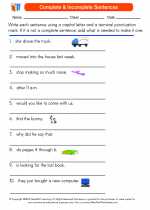Complete & Incomplete Sentences
In English language arts, understanding the difference between complete and incomplete sentences is important for developing strong writing skills. A complete sentence contains a subject, a verb, and expresses a complete thought. An incomplete sentence, on the other hand, lacks one or more of these elements and does not express a complete thought.
Complete Sentences
A complete sentence has three key components:
- Subject: The person, place, thing, or idea that the sentence is about.
- Verb: The action or state of being expressed in the sentence.
- Complete Thought: The sentence expresses a complete idea or meaning.
Incomplete Sentences
An incomplete sentence may be missing one or more of the key components of a complete sentence. It may lack a subject, a verb, or fail to express a complete thought.
Study Guide
Here are some tips for identifying complete and incomplete sentences:
- Look for a subject and a verb in the sentence. If both are present and express a complete thought, it is a complete sentence.
- If a sentence is missing a subject or a verb, or if it does not express a complete thought, it is likely an incomplete sentence.
- Practice writing complete sentences by ensuring that each sentence has a clear subject, a verb, and expresses a complete thought.
- Review examples of complete and incomplete sentences to reinforce your understanding.
Understanding the difference between complete and incomplete sentences is essential for effective communication and writing. With practice, students can develop the skills to identify and construct complete sentences with confidence.
[Complete & Incomplete Sentences] Related Worksheets and Study Guides:
.◂English Language Arts Worksheets and Study Guides Third Grade. Complete & Incomplete Sentences
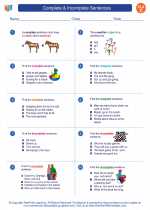
 Worksheet/Answer key
Worksheet/Answer key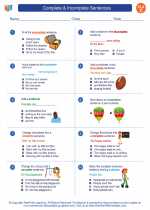
 Worksheet/Answer key
Worksheet/Answer key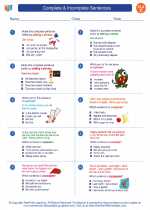
 Worksheet/Answer key
Worksheet/Answer key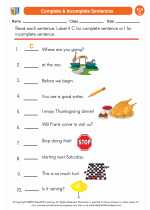
 Worksheet/Answer key
Worksheet/Answer key